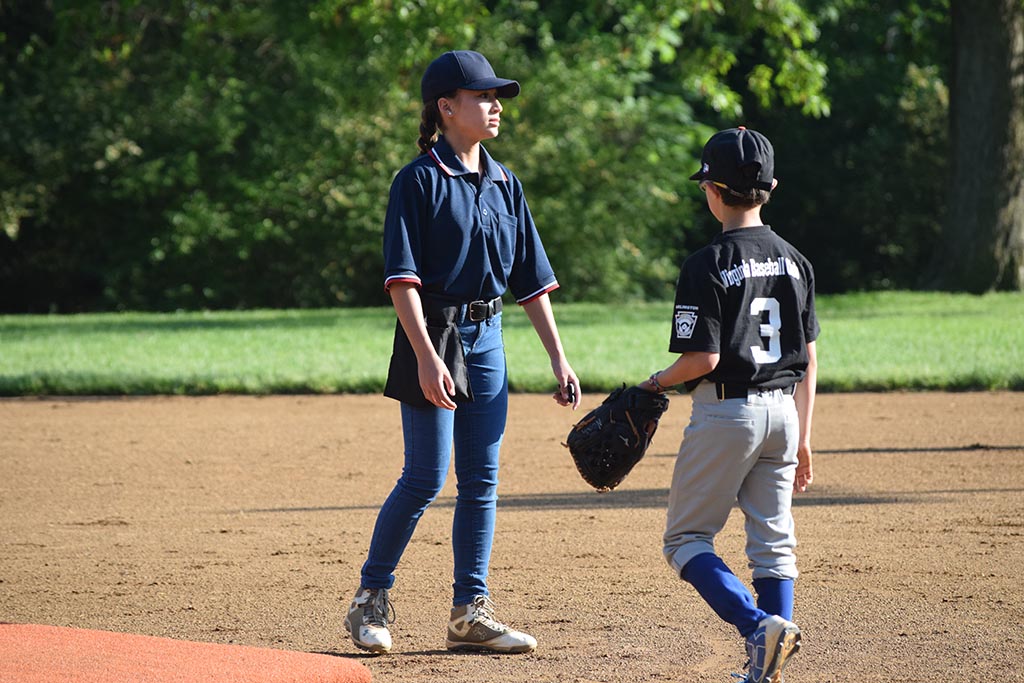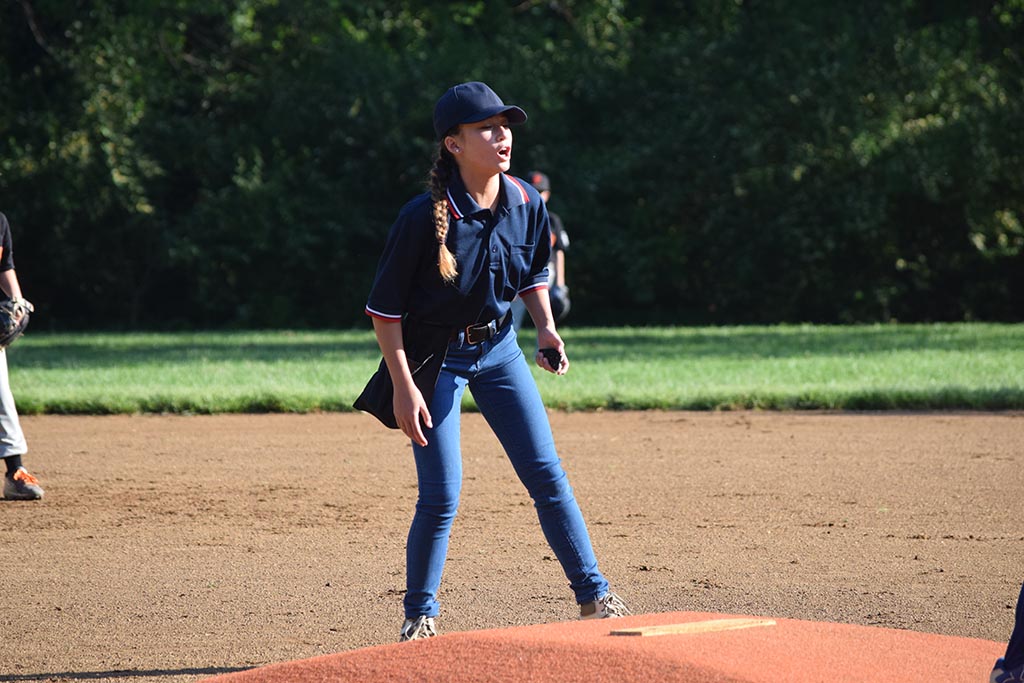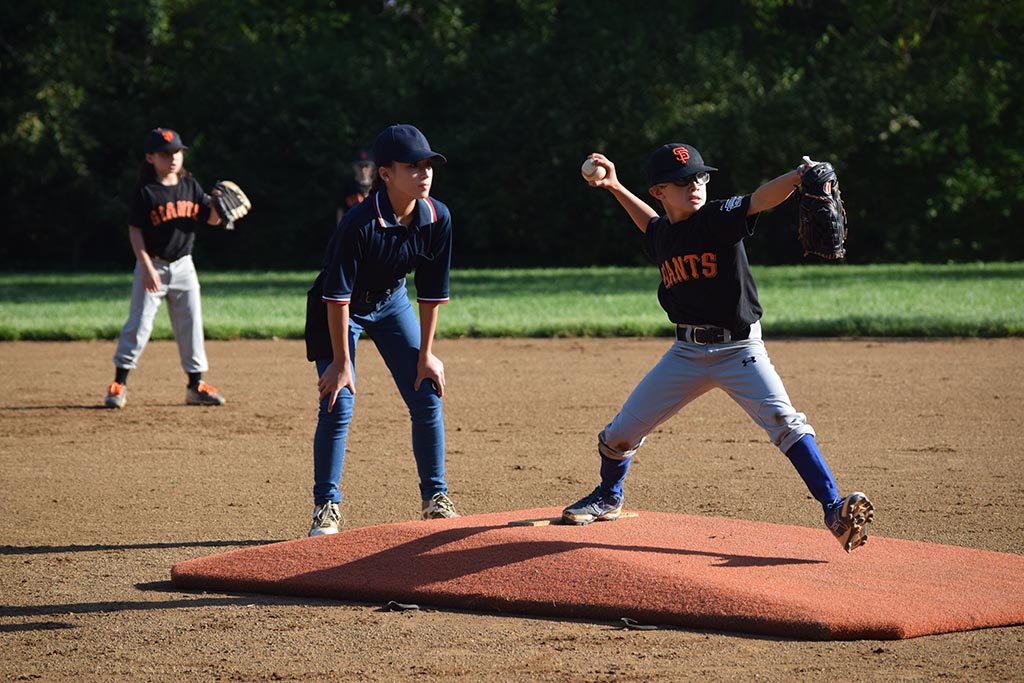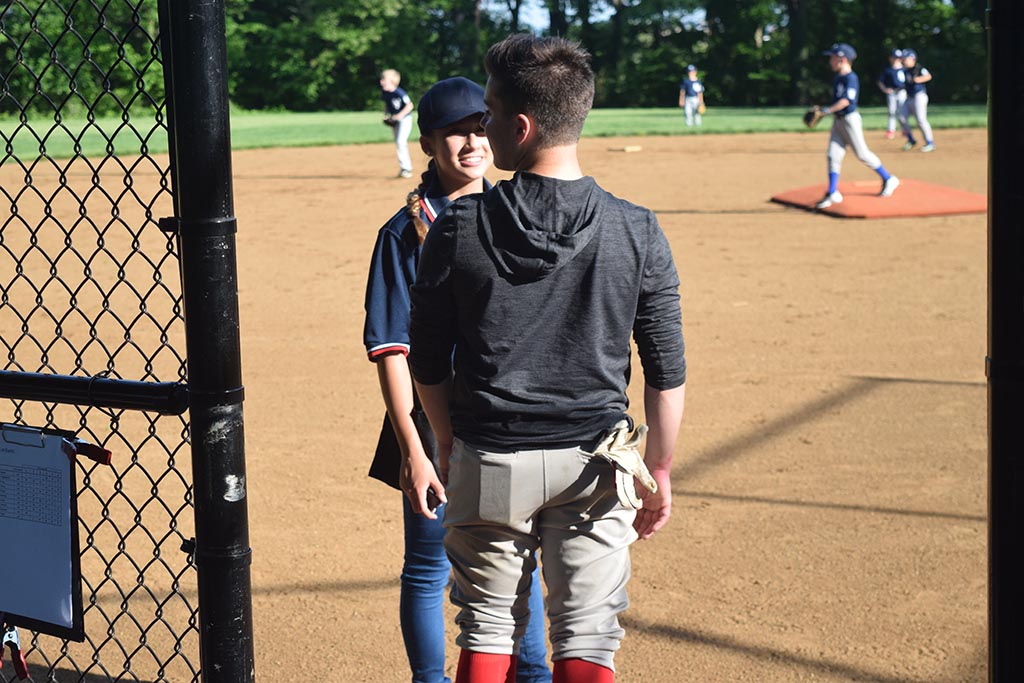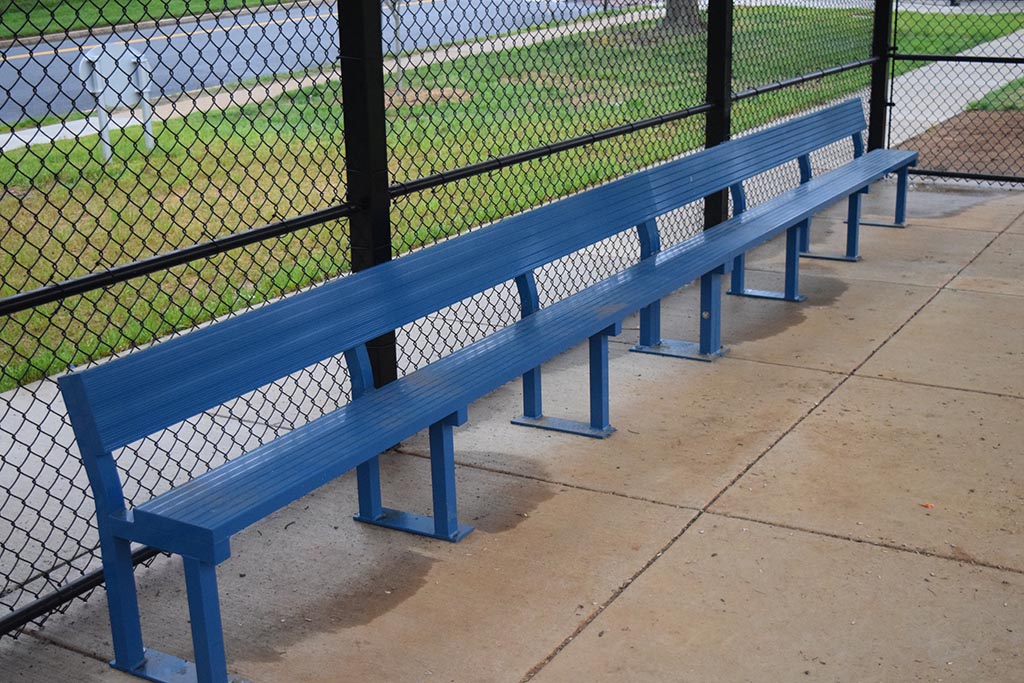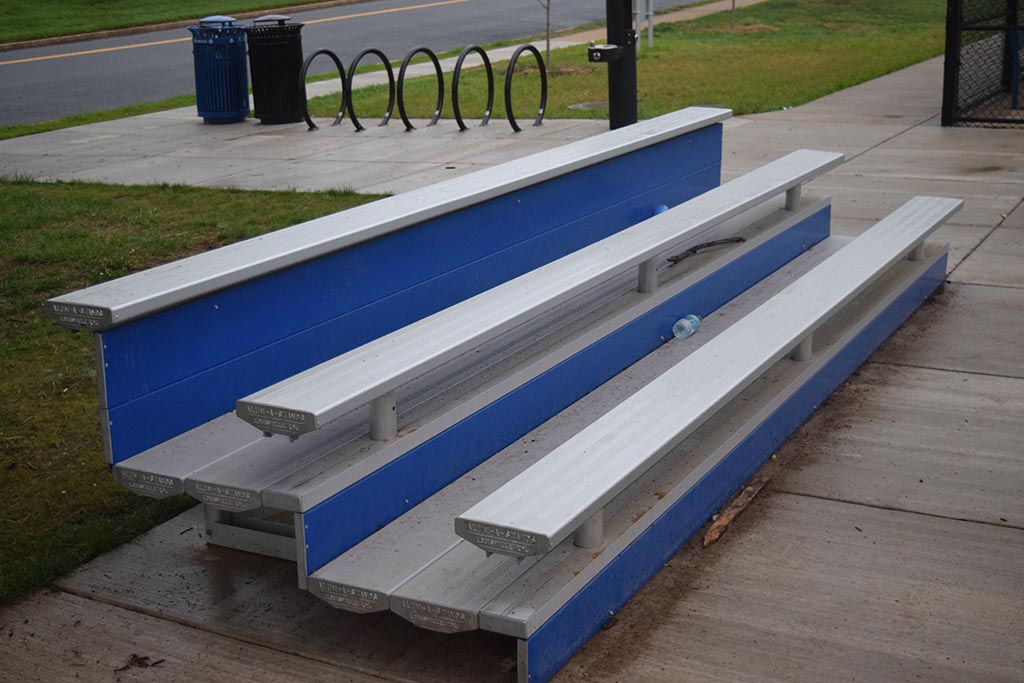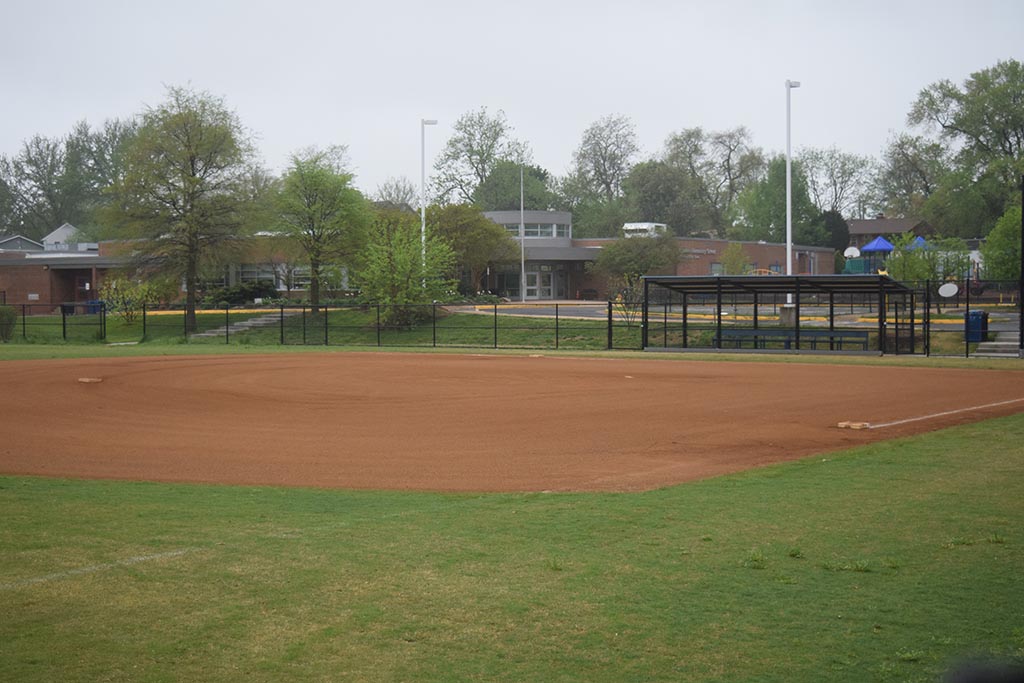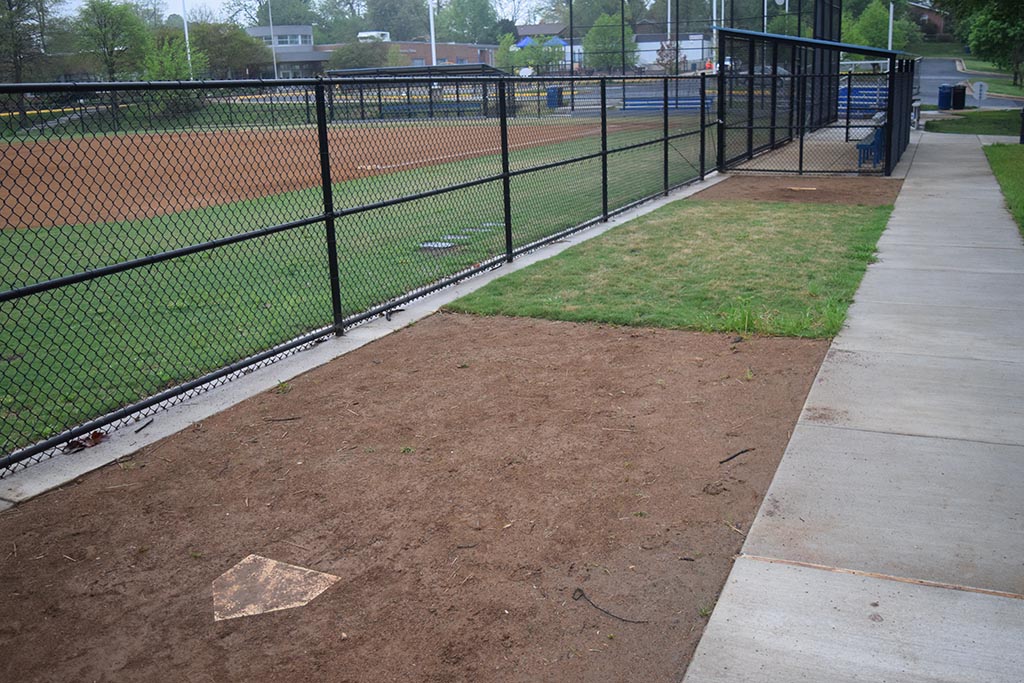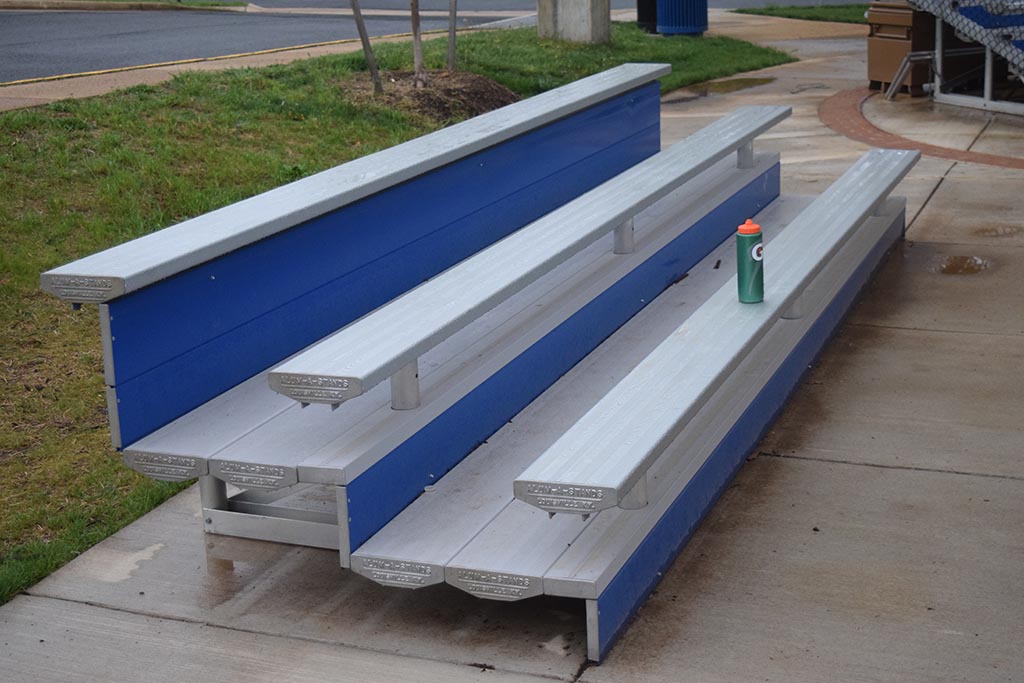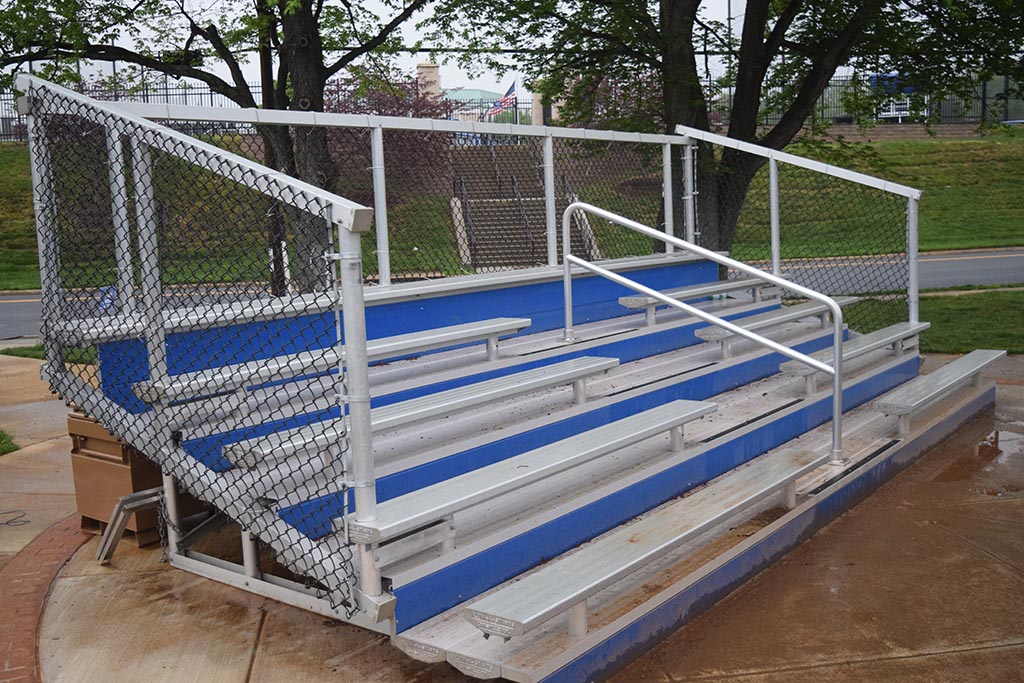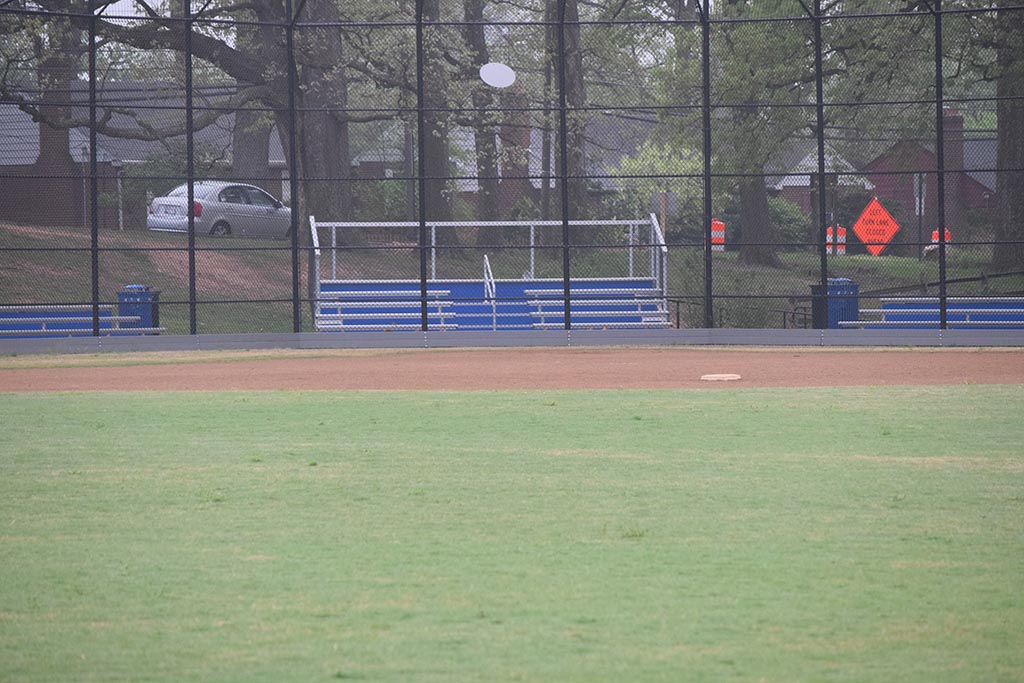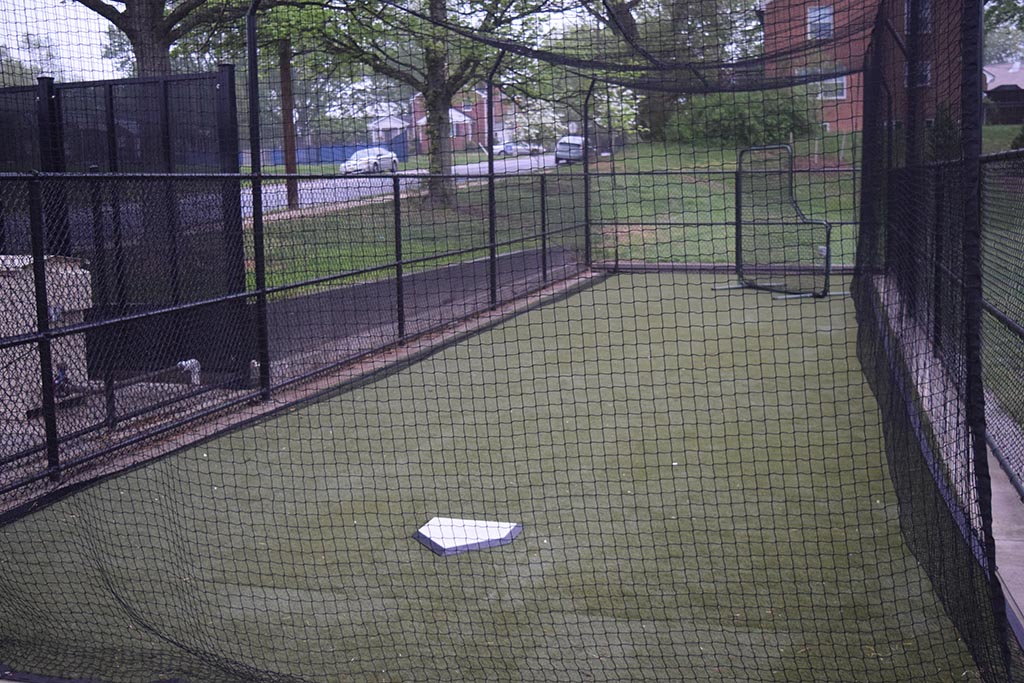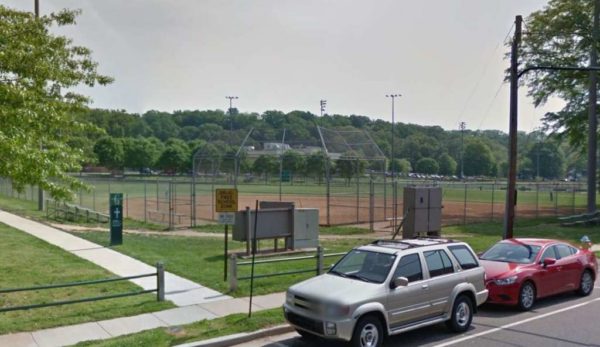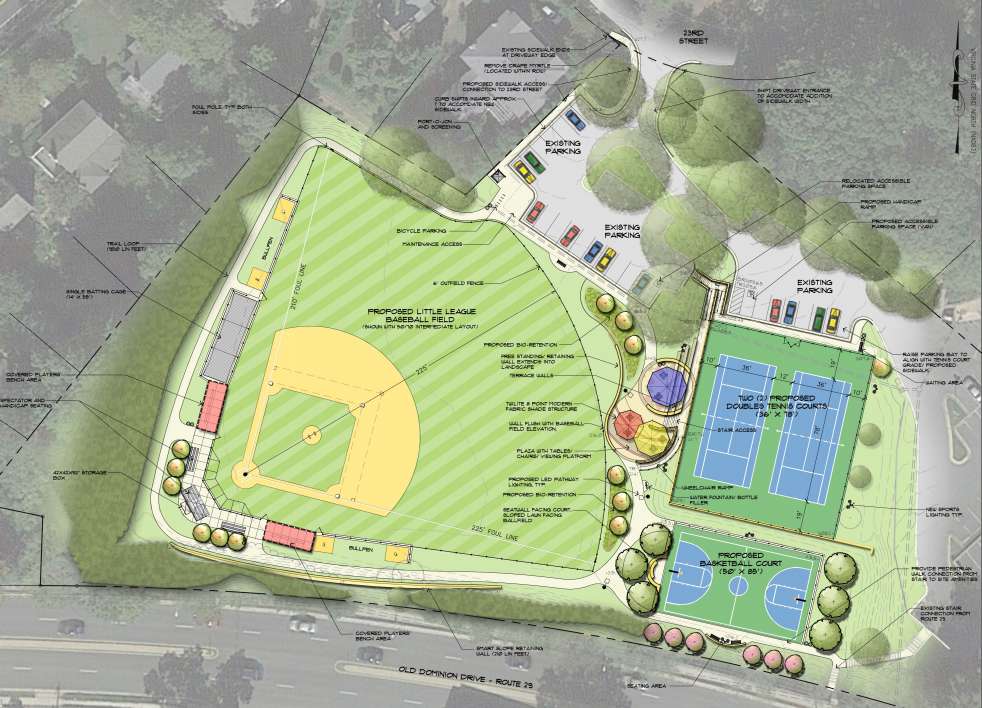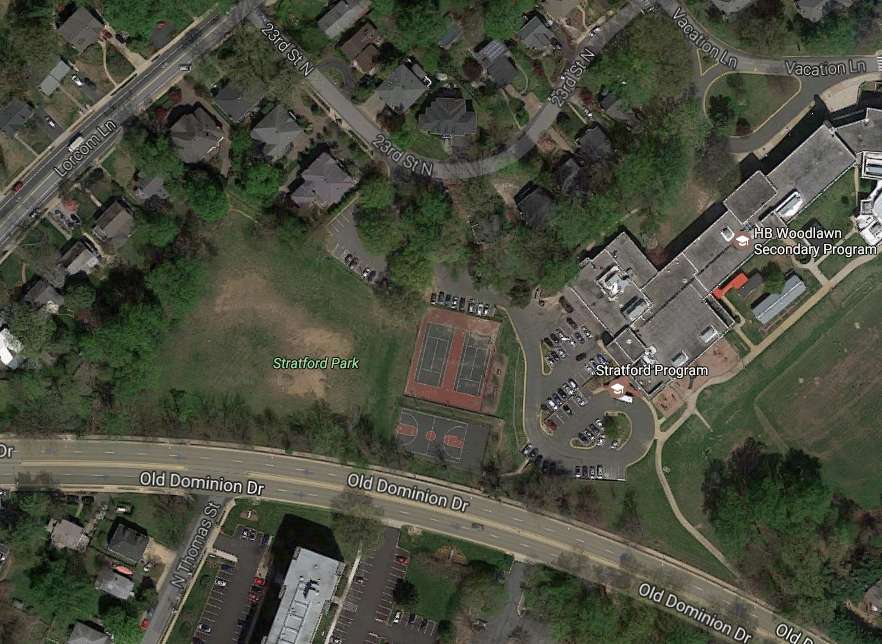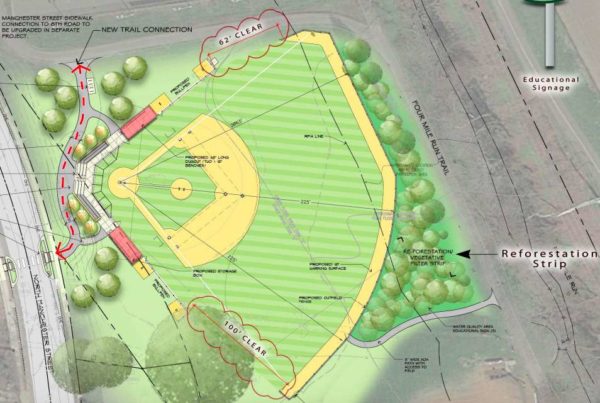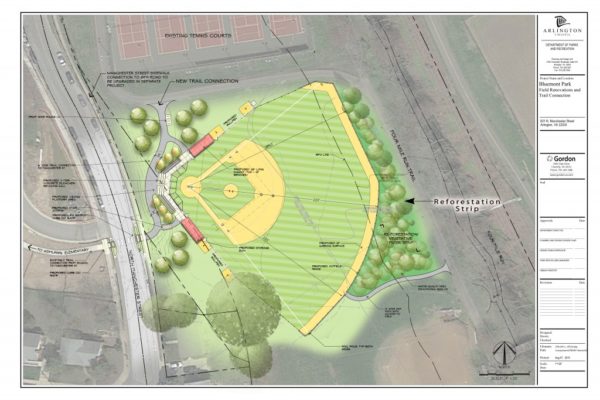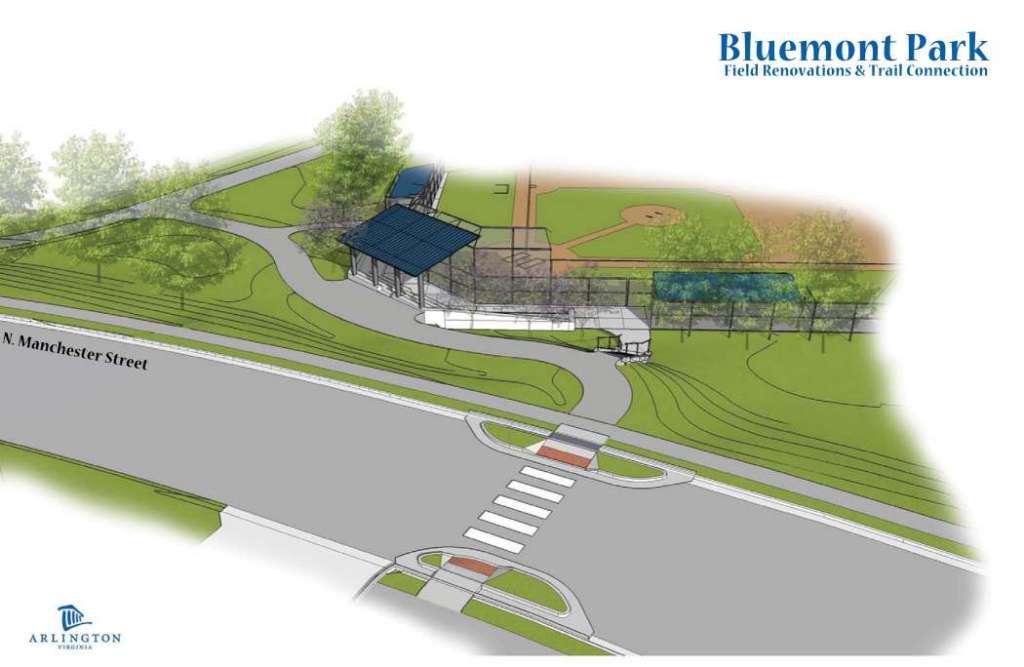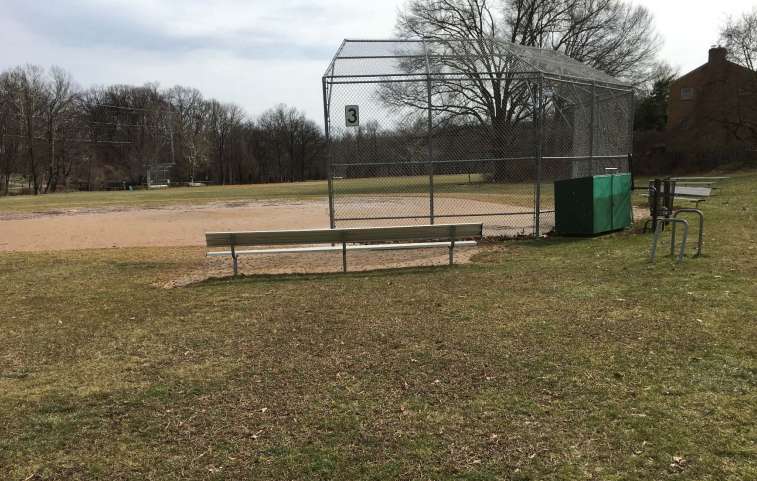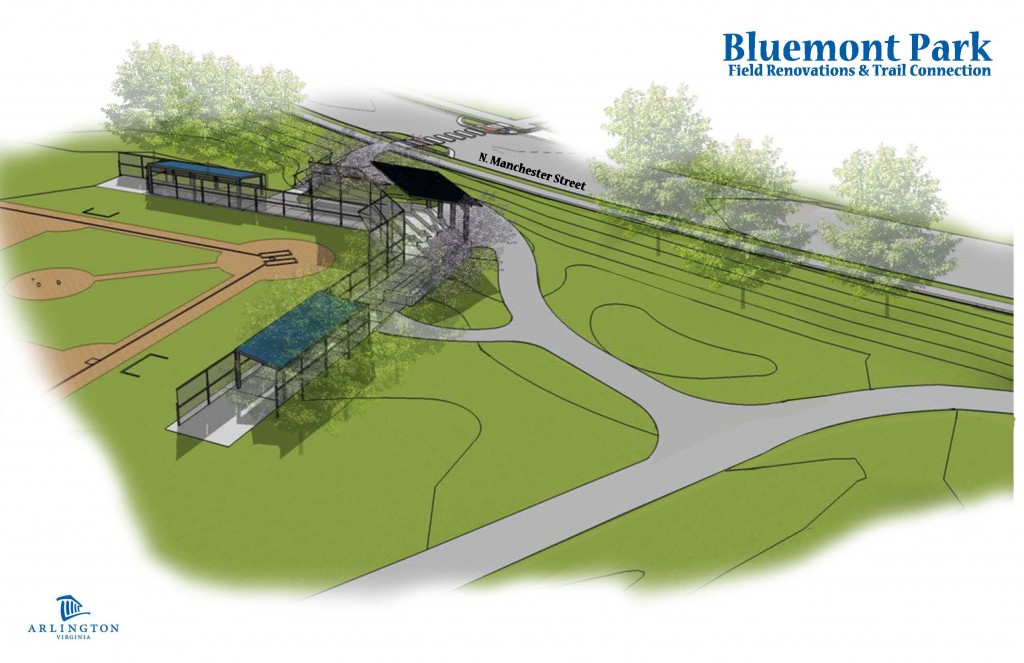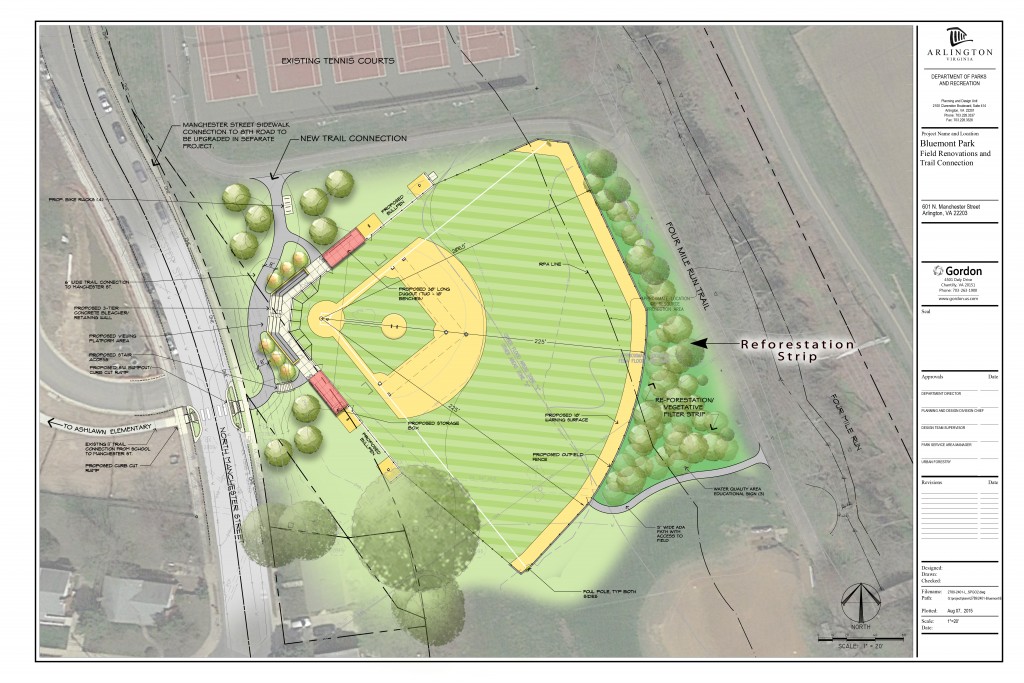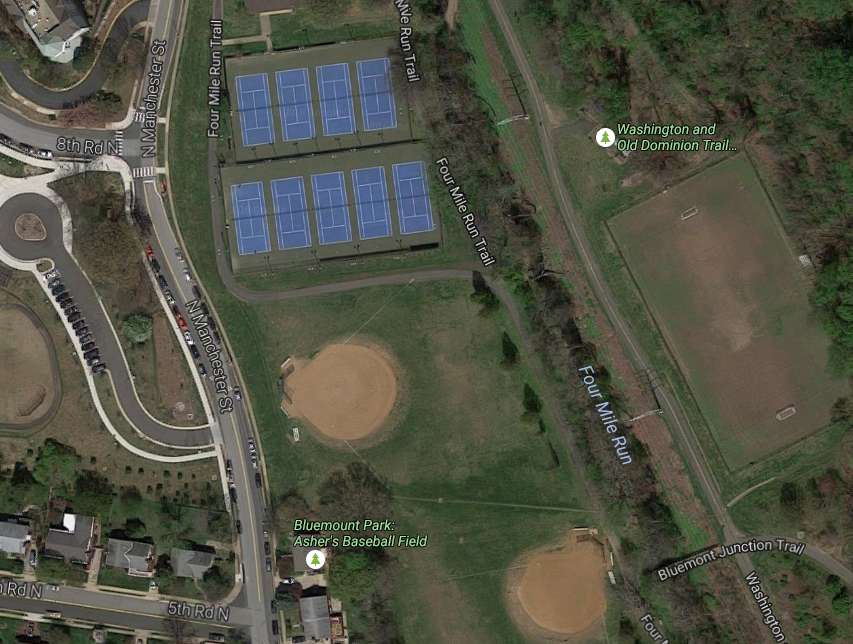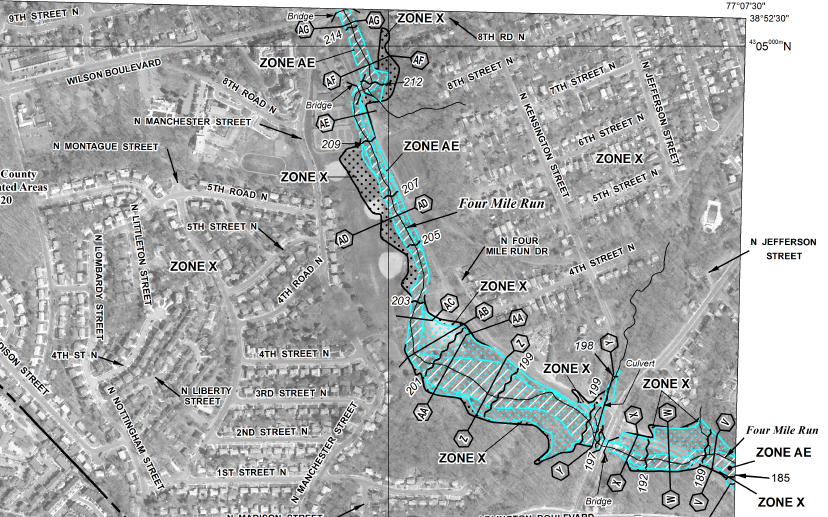By the time she was 9 years old, Isabel Graham had earned a black belt in mixed martial arts and, with a younger brother around, has always enjoyed being in charge.
So it seemed like a natural fit when she began umpiring in Arlington Little League earlier this season.
Out of an officiating roster of dozens of teenagers and a handful of adults, Graham is currently the only female ump in the league. (An older female umpire is out with an injury.)
But the 14-year-old Graham, an eighth-grader at St. Thomas More Cathedral School, said that her gender has never been an issue for anyone as she takes charge of games at the AAA and Majors levels for children up to the age of 12.
“At this age the players don’t actually know that it’s different, so they treat me like anyone else,” she said before a recent game at Fort Scott Park. “The only people who know it’s different are the parents, so the moms always give me a smile.”
Graham combines her umpiring with playing travel softball for Arlington Sage, and also plays basketball during the winter. She was introduced to umpiring by her friend and St. Thomas More classmate Nicolas Lopez-Riveira, now in his third season overseeing Little League games.
And she seems to have taken to the umpiring quickly. She said it is very similar to playing catcher on her softball team, as she is in charge and sees a lot of action behind home plate.
“It’s exciting, but I guess I’ve seen her in so many things where if she’s not in charge, she’s at least constantly aware of what’s going on,” said her father Michael Graham. “I’m not surprised that she enjoys it, mostly because of the interest in softball and baseball. I’m glad that she’s doing it.”
To become an umpire, Isabel Graham went through training on the rules of the game and how to handle situations on the field. League umpire-in-chief Steve Sundbeck said he has approximately 65 teenagers and seven adults, including himself, that umpire. The league has approximately 1,500 children as young as 4 that play baseball.
Sundbeck said he looks to use the training program to teach new umpires good sportsmanship and confidence, something that is helped by a league culture in Arlington that emphasizes earning respect and doing your best, regardless of age.
“It really is a matter of doing the best job you can in the first place, because they’ll know when you’re getting lazy and not getting in position,” Sundbeck said. “And you just know what to ignore and what to call out that you’re not putting up with. We try to teach them the rubric.”
And while Isabel Graham said she gets nervous before games start, once the batter settles into the box, it feels natural.
“They’re really just trying to have fun, and they often don’t understand what’s happening, they just want to get out there and play,” she said. “I don’t think there’s that much pressure. Mostly I’m just pressuring myself. I’ll always think I’ll make mistakes, but I’ll have to get over it.”
Isabel Graham will start at Bishop Ireton High School in Alexandria in the fall and said she hopes to continue umpiring and maybe move up to the 50/70 level, the highest in Arlington Little League.
“She’s always been a fairly focused, confident kid and loves all things baseball as well as being in charge,” said Michael Graham. “So being an umpire seems to be a really good fit for her personality and interest in sports. Whether she’s the only girl or the first girl to do anything has never really been of concern to her.”


